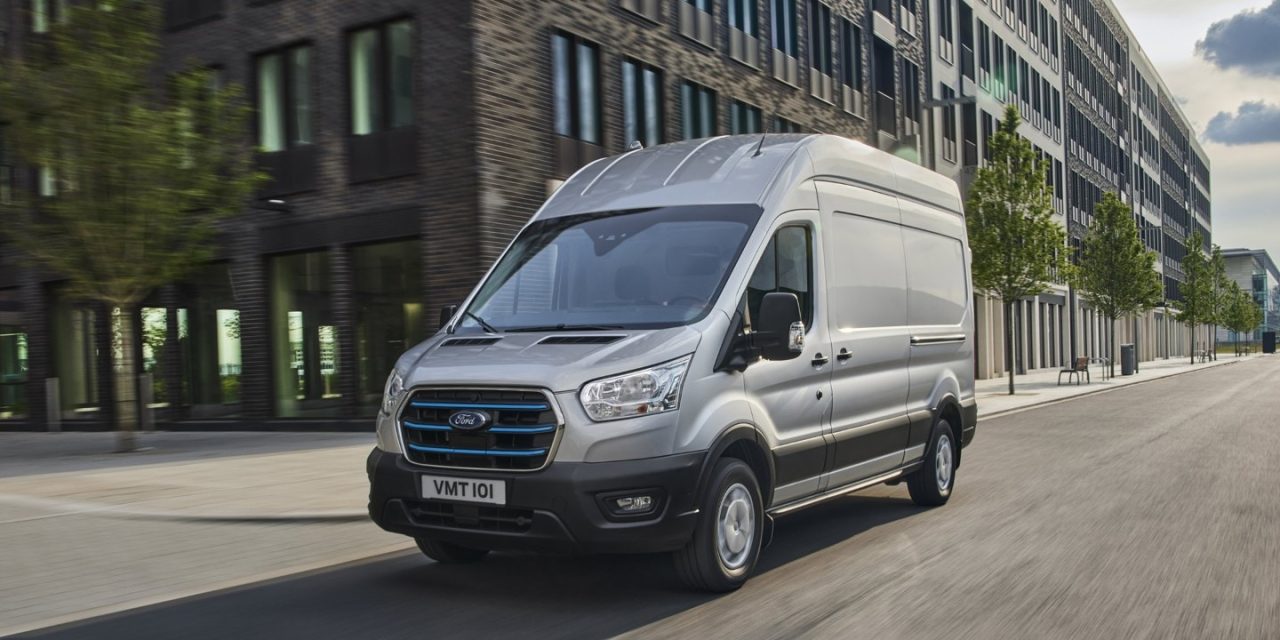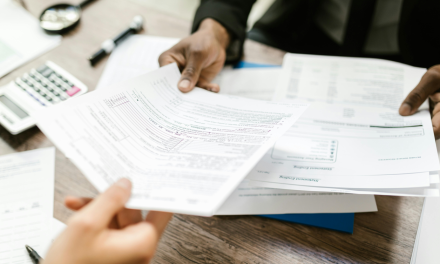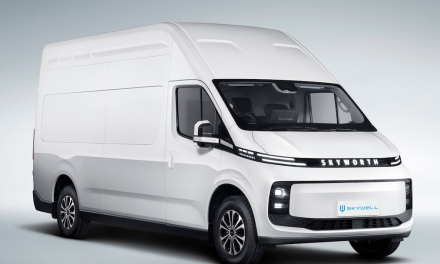Leasing a commercial vehicle can offer a range of tax advantages that make it an attractive option for businesses of all sizes. Compared to outright purchase, leasing provides more flexibility and often less upfront financial commitment, which can be particularly beneficial for managing cash flow. One of the main reasons companies choose to lease is the potential for favourable tax treatment, as lease payments may be deductible against taxable profits, and VAT recovery options could apply depending on usage.
Furthermore, the way leased assets are treated on the balance sheet and in accounting records differs from purchased assets, which can have implications for both taxation and financial reporting. By understanding how leasing interacts with various tax regulations, including those related to VAT, corporation tax, and allowable expenses, businesses can make more informed and strategic decisions. This article explores the core tax benefits of leasing a commercial vehicle in the UK and outlines how different leasing arrangements impact tax liabilities.
Understanding vehicle leasing for businesses
Leasing a vehicle allows a business to use a car or van without taking ownership. Instead, the company pays monthly instalments over an agreed period, usually two to five years, and returns the vehicle at the end of the lease term. This model appeals to businesses that want to avoid the risks of depreciation and the hassle of selling the vehicle later on.
One of the key advantages of leasing is cost predictability. Lease agreements typically include fixed monthly payments, making budgeting easier. In many cases, maintenance packages are also included, reducing unexpected repair costs. Leasing is also attractive for firms needing to keep their vehicle fleet up to date with the latest models and emissions standards. It offers access to new vehicles without the capital outlay associated with buying, which preserves working capital for other investments.
Leasing is particularly popular among SMEs and sole traders looking to manage costs while maintaining a professional business presence through a reliable vehicle fleet.
Key differences between leasing and buying
When deciding between leasing and buying, businesses must weigh the benefits of ownership against the financial and tax implications of each method. Purchasing a vehicle involves a significant upfront cost or long-term finance agreement, while leasing offers access to the vehicle with minimal initial expenditure.
From a tax standpoint, leased vehicles are treated as an ongoing business expense, meaning monthly payments may be deducted from taxable profits. In contrast, purchased vehicles are treated as capital assets, and only a portion of their value is tax-deductible through capital allowances over several years.
Leasing also provides more flexibility at the end of the term. Instead of dealing with resale or depreciation, the vehicle is simply returned. Buying may offer long-term value if the vehicle is kept for many years, but it ties up capital and exposes the business to the risks of value loss over time.
Tax deductibility of lease payments
One of the primary tax advantages of leasing a commercial vehicle in the UK is the ability to claim lease payments as an allowable business expense. This means that a business can deduct the monthly lease costs from its taxable profits, potentially reducing the overall corporation tax liability. For sole traders and partnerships, these deductions can reduce income tax owed on business profits.
The amount that can be deducted depends on the type of vehicle and how it is used. For cars with CO2 emissions above a certain threshold, only a percentage of the lease cost is deductible. However, for commercial vehicles like vans and pickups, which are typically used solely for business purposes, the full lease payment may be deductible, provided that the vehicle is not used for private journeys.
Keeping accurate records of vehicle use is essential to support these deductions, especially when HMRC assesses whether the expense is wholly and exclusively for business purposes.
How lease payments reduce taxable profits
Lease payments are treated as a trading expense on the company’s profit and loss statement. By deducting these costs, a business effectively lowers its taxable income. For example, if a business has £50,000 in taxable profits and £5,000 in qualifying lease payments, it may only be taxed on £45,000.
This can represent a significant saving, particularly for businesses with multiple leased vehicles or those on higher tax rates. It also allows for better financial forecasting, as lease payments are fixed and predictable.
It’s important to differentiate between finance leases and operating leases. In most cases, operating leases offer more favourable tax treatment because the asset remains off the balance sheet and the payments are considered operating expenses. Finance leases, while sometimes cheaper, may be treated differently for tax and accounting purposes, affecting what can be deducted and how.
VAT implications on leased commercial vehicles
Leasing a commercial vehicle also offers specific advantages when it comes to VAT (Value Added Tax). For VAT-registered businesses, it is often possible to reclaim some or all of the VAT charged on lease payments, depending on how the vehicle is used. This can result in significant cost savings, particularly when leasing multiple vehicles or more expensive models.
In most cases, if the vehicle is used exclusively for business purposes, 100% of the VAT on the lease payments can be reclaimed. However, if the vehicle is used for both business and personal purposes—even occasionally—only 50% of the VAT on the lease cost can be recovered. Businesses can still reclaim 100% of the VAT on any maintenance or service charges included in the lease, regardless of how the vehicle is used.
It is vital for companies to maintain detailed records of vehicle use, including mileage logs, to justify VAT claims if challenged by HMRC. Failing to provide sufficient evidence could result in VAT being disallowed.
Claiming back VAT on lease agreements
The process of claiming back VAT is relatively straightforward. The leasing company provides a VAT invoice each month, which the business can include in its quarterly VAT return. The amount reclaimable depends on the type of vehicle and the level of private use involved.
For cars with dual usage, as noted, only 50% of the VAT on the finance element is reclaimable. This rule applies regardless of how little private use occurs. For commercial vehicles such as vans, if they are used solely for business activities, the full amount is often reclaimable. However, HMRC takes a strict view on what constitutes exclusive business use, so evidence is critical.
It is also worth noting that any up-front payments or deposit rentals may be eligible for partial or full VAT recovery, again based on usage. Businesses should consult with their accountant or tax adviser to ensure they maximise their VAT recovery without falling foul of HMRC regulations.
Capital allowances and leasing
When a business buys a commercial vehicle outright, it may be able to claim capital allowances to offset the cost against taxable profits over time. However, this option does not typically apply to leased vehicles. This is because leasing does not transfer ownership to the lessee, meaning the business cannot treat the vehicle as a capital asset on its balance sheet.
Instead, the business claims tax relief through lease payments, which are treated as revenue expenses. While this means capital allowances are not available, the full or partial deduction of lease payments from taxable profits can, in many cases, result in comparable or even better tax outcomes, particularly when vehicle use is short-term or turnover is high.
The structure of the lease also affects tax treatment. If a lease agreement includes a final balloon payment or purchase option, it may be categorised differently for tax and accounting purposes. Careful structuring can help ensure the lease remains eligible for expense deductions while maintaining financial flexibility.
Why leasing doesn’t qualify for capital allowances
Leasing excludes a business from claiming capital allowances because the company does not technically own the vehicle. HMRC’s rules reserve capital allowances for assets that a business buys and owns. As a result, leased vehicles are considered operating costs rather than capital investments.
This might seem like a disadvantage, but it can actually simplify tax calculations. Lease payments are deducted as they are made, aligning more closely with actual cash flow. This can be especially useful for small businesses that prefer straightforward, predictable deductions.
For companies that need long-term access to vehicles without tying up capital, this arrangement is often more efficient. It avoids the complexity of calculating writing down allowances and depreciation over several years. Ultimately, while the lack of capital allowances is a limitation in strict terms, the ongoing deductibility of lease payments can be more beneficial from a tax and cash flow perspective.
Comparing lease options for maximum tax efficiency
Not all leasing arrangements are the same, and choosing the right type of lease can influence the tax benefits a business can claim. In the UK, the two main types of leases are operating leases and finance leases, each with distinct tax treatments and accounting implications. Understanding these differences allows businesses to structure agreements in a way that maximises tax efficiency.
An operating lease is generally short to medium-term and does not transfer ownership to the lessee. It’s usually considered an off-balance-sheet transaction, and all lease payments are treated as deductible expenses. This is often the more tax-efficient option for businesses wanting flexibility and simplicity.
A finance lease, on the other hand, behaves more like a loan, with the vehicle often appearing on the lessee’s balance sheet. In this case, lease payments are split into interest and capital elements, and only the interest portion is immediately tax-deductible. The business may also be responsible for maintenance and residual value risks, which can add complexity.
Operating lease vs finance lease from a tax perspective
From a tax standpoint, operating leases typically offer more favourable treatment. All lease payments are generally deductible, and VAT can often be reclaimed according to business use. This simplicity makes them a preferred choice for many SMEs and those without complex accounting needs.
Finance leases, however, can still be beneficial in certain circumstances. The asset is treated as owned for accounting purposes, which may help firms looking to show stronger fixed asset positions. In this structure, the interest element of the payments is deductible, and capital allowances may apply if structured as a hire purchase arrangement — though this blurs the lines between leasing and buying.
Selecting between the two should be based on both tax impact and operational needs. If minimising tax and administrative effort is a priority, operating leases are usually more appropriate. If asset ownership or customisation is important, finance leases might offer the right balance, even if they involve more complex tax handling.
Conclusion on vehicle leasing tax benefits
Leasing a commercial vehicle provides a practical and often tax-efficient alternative to purchasing, particularly for UK businesses aiming to manage cash flow and reduce their overall tax burden. The ability to deduct lease payments as allowable expenses, coupled with the potential to reclaim VAT, offers tangible financial advantages for both limited companies and sole traders.
Although leasing does not allow for capital allowances, the offsetting of regular payments against taxable profits can offer comparable relief with less complexity. Moreover, the type of lease—operating or finance—plays a critical role in determining the precise tax treatment, making it essential to match leasing structures with business objectives.
In summary, leasing can be a valuable strategy for businesses looking to maintain flexibility, preserve working capital, and benefit from predictable tax deductions. However, as with any financial decision, professional advice is recommended to ensure that the chosen arrangement aligns with the latest tax regulations and the specific needs of the business.
FAQs
Can I claim lease payments as a business expense on my tax return?
Answer: Yes, lease payments for commercial vehicles used in business can typically be claimed as allowable expenses, reducing taxable profits.
How much VAT can I reclaim on a leased commercial vehicle?
Answer: If the vehicle is used solely for business, 100% of the VAT on lease payments may be reclaimed; otherwise, it’s usually 50%.
Do leased vehicles qualify for capital allowances?
Answer: No, since leased vehicles are not owned by the business, they do not qualify for capital allowances, but lease payments are deductible instead.
Is there a difference in tax treatment between operating and finance leases?
Answer: Yes, operating leases allow full deduction of payments, while finance leases split costs into capital and interest, affecting tax treatment.
What records should I keep to support my tax claims for leased vehicles?
Answer: Keep detailed mileage logs, lease agreements, and VAT invoices to substantiate business use and support VAT and expense deductions.





